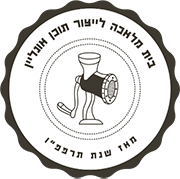Shock, panic, negotiation, depression, acceptance – these are the five stages content writers often go through when faced with the daunting task of crafting complex scientific content. I know these stages intimately from my time as a lawyer specializing in patent law, a role that required distilling intricate scientific information into digestible pieces for individuals not well-versed in the subject matter, like judges. Receiving a new case in a scientific field previously unknown to me was a daily reality. So, let’s start by taking a deep breath.
Don’t panic: Here’s how to tackle writing scientific content
Indeed, deciphering scientific content can pose quite a challenge. A profound understanding is required not only to write about it but also to make it accessible to a broader audience. So, is it possible for a proficient writer to bypass the years of training that professions like microbiology or machine engineering require? The answer is primarily no, but to some extent, yes.
Deep understanding of a scientific field indeed requires extensive training. However, if you aim to grasp the fundamental principles and central processes, there are shortcuts. Reading background materials, having in-depth conversations with experts, and reviewing abstracts of recent research can help you gain a substantial understanding in a short time. In the era of tools like ChatGPT, the process can be even more streamlined. Granted, you won’t become an expert in the field and your knowledge might be somewhat insular, related mostly to the specific topic you are writing about, However, you will acquire the necessary tools that will enhance your understanding.
Now that we’ve settled down, let’s address the real challenge: crafting scientific content that someone will actually want to read. After all, resources invested in writing scientific content aren’t simply for display. There’s always an objective. Sometimes, the aim is to make scientific material accessible, as in the case of the Davidson Institute, the educational branch of the Weizmann Institute, which has become a beacon for science enthusiasts. Other times, the goal is more specific – like the Dangour Center for Personalized Medicine, which disseminates information to those interested in the unique field of personalized medicine, or a commercial company that avails technological knowledge to engineers.
In a previous article on the subject, we discussed the importance of making scientific content accessible to those who are already experts in the field. This time, we will focus on techniques and insights that can help you write clear, accessible, and engaging scientific content, one that your defined target audience (professionals and non-professionals) will be pleased to read.
Five Rules for Writing Accessible and Engaging Scientific Content:
1. Establish a narrative: Who are you writing for and why?
Every piece of content should have a purpose, preferably one that fits within an overall content strategy. This purpose should be at the forefront of your mind as you write. For example, if you’re simplifying a scientific article to underscore a specific advantage of a product you’re writing about, your writing should emphasize that part of the research that illustrates this advantage, and clarify it thoroughly for the reader. On the other hand, if you’re simplifying an article as part of a section that publishes regular updates, the details will be less in-depth, and the writing will aim to introduce something new in relation to previous knowledge in the field, and the potential impact on future research. Having a clear purpose will help you choose the angle from which to approach the writing and simplification process.
2. Separate the wheat from the chaff: What can be omitted?
Scientific articles that are peer-reviewed detail all stages of an experiment to a granular level, so that they can be critiqued or replicated. Much of this information may not directly relate to the research hypotheses or experiment results. For example, in a laboratory experiment where mice were infected with a disease to check whether a certain manipulation aids in recovery, part of the research will deal with the technical way the mice were infected, which may be less relevant to the results of the experiment itself. To make scientific information accessible so that the target audience can read and understand it, we need to separate the main point from the many details, and decide what can be skipped over.
How do you decide what’s the main point and what’s secondary? If you’ve defined the narrative and the purpose of writing, they can serve as a lens that will filter what is more important and what is less. For example, in a particular study in the field of RNA editing, much space was devoted to the way 1,428 specific types of RNA molecules (“long non-coding” if you must know) were filtered, reducing the list to 399 molecules, from which one gene was finally isolated. The novelty of the research focused on the function of that specific gene, not the way it was selected. Therefore, the overload of technical information on the filtering process would not have contributed to the article’s simplification goal, and therefore was not mentioned. To explain how to make vegetable soup, you don’t need to explain how we chose the products at the grocery store. This brings us to the next topic.
3. Analogies: Can’t live with them, can’t live without them
Analogies are a powerful tool in conveying information. The idea behind analogies is to create a connection between two subjects—one that the target audience is already familiar with, and another one that’s less familiar. When the audience can visualize a situation that they already know, and apply it to a new field they are learning, their brain can process the new information more easily.
However, analogies can also be a dangerous tool. The connection between two domains or situations will never be identical, which means that an analogy can also lead to misunderstanding. For example, if we take the vegetable soup from the previous paragraph, the analogy indeed makes it easier to understand why not every detail mentioned in a research is critical. But, on the other hand, it can be misleading: choosing vegetables at the supermarket and isolating a specific molecule aren’t really the same thing. Therefore, it’s advisable to scientifically ensure that the analogy isn’t problematic and, if necessary, to add disclaimers.
A good example of an analogy that makes scientific research accessible is the comparison between editing DNA and editing a word processor software. The nucleotides that make up DNA sequences are represented by letters, and editing them, much like editing a text, requires “find and replace,” or “copy/paste,” terms that are much more familiar to us than “nucleotides.”
4. Reducing Cognitive Load: Have a little mercy on the reader
In every task where our brain needs to learn and digest new information, it strains itself. This goes against one of our brain’s main objectives: to exert as little effort as possible to prevent overload. This conflict creates one of the main challenges in writing about complex subjects.
How do we approach cracking this challenge? By understanding the mechanisms the brain uses during a learning task. One mechanism the brain activates to facilitate learning is known as “working memory”. Working memory is a complex topic, but simply put, it’s a short-term memory that allows a person to take in information and “hold it in their head,” maintaining a level of focus that allows a train of thought to continue. When working memory is flooded with too much information, or information that requires too much attention to process, it creates a state of cognitive overload that interrupts the learning process.
The cognitive load in reading a scientific article is high. Any unnecessary additional effort could distance the reader from understanding the text, or worse – deter them from the article itself. How can we alleviate cognitive load? We venture here into a whole world of tools: splitting long sentences into shorter ones, avoiding unnecessary repetition of definitions, refraining from using terms that are written or sound similar, and more. Remember the “long non-coding RNA molecules” from section 2? If I were writing this article for a scientific purpose, I would omit these parentheses or alternatively dedicate a couple of lines to explain right in the body of the text what is being discussed.
5. Write as if you don’t know the research outcome
Do you know the story about little David who defeated the giant Goliath with a single rock hurled from his sling onto his forehead?
I guess I ruined the whole story. Why? Because I started from the end, and I squandered the potential to convey the information in a suspenseful manner. And so do so many writers of scientific content. The main reason for that is that scientific articles are written in a conventional construct, in which the first segment is the abstract. Since the abstract is an extract of the entire research in several paragraphs, the writers are soon to reveal the study’s results. The human tendency is to maintain the familiar pattern, so the writers tend, without even noticing, to stick with the construct as given. The result is a conflict of purposes: the reader is exposed the results too early, and loses his motivation to keep on reading, so that you have missed the opportunity to relay the information as you wished to relay.
What can you do? You write the story of the research as if you don’t know it’s outcome. Do not start from the research construct. Instead, try see it from the researchers’ point of view. Why did they create this experiment, what were their hypotheses, what did they expect to find, what would different results mean – those are questions that create suspense and engage your reader up until the end of the article, as he gains knowledge and insights along the way. If you have access to the researchers, it can be insightful to talk to them about the moments before they embarked on their research. They may reveal intriguing details that are not mentioned in the paper itself.
Binge scientific content: get inspired by Netflix
Like any form of writing, scientific writing is a muscle that can be trained. As a first step, it is advisable to start watching science-based series and examine the accessibility techniques used in them.
Netflix offer a plethora of such content. Shows such as “Unnatural Selection “, “The Mind, Explained”, “The Human Body: Secrets of Your Life Revealed” and others use various techniques to simplify scientific concepts for a wider audience. Watching these programs through the lens of a writer can help identify different tools used to facilitate understanding and processing of information. While the results might not always be successful, such a “binge” can offer valuable lessons.




